Campus bats moving to houses built by Art & Ecology Class
Professor Brian Collier says students came up with the idea, influenced partly by Founders coming down, and wondering where small and beneficial insect-eaters from its upper reaches might take up residency
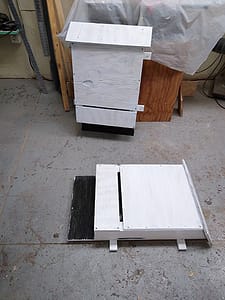
Bat houses ready for painting during their construction.
It’s moving time for the bats who have been hanging out in the bell tower/cupola and possibly other upper reaches of Founders Hall all these years.
The iconic bell tower structure was scheduled to come off of Founders May 19 or 20, with dismantling of the building to follow in coming weeks and months before next semester. Just in time, says Brian Collier, professor of fine arts/art & graphic design, he and students in his Art & Ecology course recently placed new bat houses on south-facing sides of Cheray and Jeanmarie Halls — a mere stone’s throw from Founders, along with other new bat houses placed at locations on Durick Library and Tarrant Recreation Center.
His students developed the bat houses as a collaborative project. “The final assignment in that course is to come up with a practical scale project that has some kind of direct, visible and potentially measurable ecological impact and are designed to be visible and draw attention to ecological issues where they are placed,” said Collier. “After discussing the parameters of the assignment and issues that the students should take into consideration, they are asked to come in with ideas to pitch to the class group.”

Student Matt Walsh works on building a bat house.
The class then works on narrowing those down to two or three projects and assigning teams to work on them. The bat house group was Matt Walsh’ 21, Jake Belanger ’21, Colby Nadeau ’20 and Emily Majewski ’21, Collier said, explaining that the idea came from their desire to build some kind of structure to benefit wild animals on campus. They settled on bat houses for a few reasons, “but primarily due to the fact that the bats currently living in Founders are going to be displaced by the demolition,” he said.
The four “nursery-sized” bat houses the students built will provide a place for these displaced bats to live and perhaps attract even more of the beneficial insect-eating animals to campus, he said. Besides the two south-facing bat houses on Cheray and Jeanmarie, others will be placed on the south facing walls of Durick and Tarrant, he said.
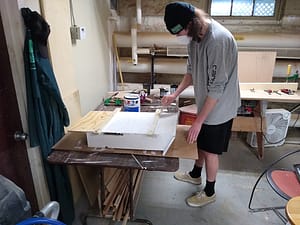
Cody Nadeau primes a bat house before it is painted black to be mounted on a building.
Each bat house is accompanied by a sign designed by students in consultation with faculty. “The location of the houses and the designed signs is intended to make this activity visible on our campus,” Collier said. “The visibility of these activities is a vital part of thinking about them as Ecological Art, meaning they not only have an ecological function, but are visibly modeling and normalizing the activity in order to inspire others to consider doing more of this kind of thing.”

Professor Brian Collier
Collier has been teaching the Art & Ecology course, formerly titled Eco & Environmental Art, each year since 2014. A few years ago it was cross-listed with Environmental Studies and now counts as an elective in that program. Students in this course work on understanding and creating visual art that is specifically focused on ecological and environmental issues, he said.
Over the years students have created many projects on campus to raise awareness and have direct impacts on local ecological issues. Students have put in a number of small pollinator plantings and gardens, started no-mow pollinator meadows on campus, made bee houses to locate near existing gardens, created artworks and informational imagery to raise awareness about plastic pollution, air pollution, water quality, organic food, food waste, and declining insect populations.
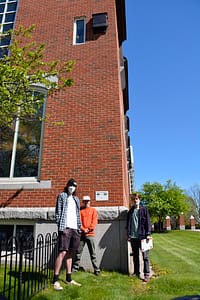
The student bat house builders beneath a bat house after it was mounted on a building recently. It’s the dark thing at the top of the image
The course offers a good example of cross-curricular initiatives in the liberal arts, Collier said. “As a course that is cross-listed between Art & Design and Environmental Studies, drawing students from outside Art & Design to think about the interrelationships of Art & Science, this course exemplifies the benefits of interdisciplinary work and thinking.”
The signs mounted below the houses are the main designed artistic element he said, adding that the builders expect these houses to last at least 10 years and that the project or its expansion might provide an ongoing project for future students.
A chief benefit of attracting bats to campus is that bats are voracious insectivores. They eat large numbers of mosquitoes, biting flies, and other flying insects. Some studies have shown that a bat can eat 4,000 or more insects in a single night.
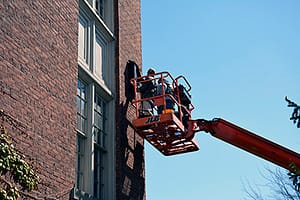
Workers use a cherry-picker to install a bat house on the side of Jeanmarie Hall recently.
Perhaps surprisingly, not one of his students voiced any concerns about finding bats creepy or scary, “though some others on campus did, so we try to highlight the fact that they are beneficial and not dangerous at all,” Collier said, adding, “The bats we have are really small, and a single nursery-sized bat house can hold up to 200 bats.”
The other two projects this semester that came out of Collier’s Art & Ecology class were, a new native bee pollinator garden in the old fountain near the 100s townhouses, and new, pollinator specific perennial plantings in the four planters behind Klein Hall, which connect to some degree with Collier’s ongoing “Unlawning” project to encourage people to let their lawns grow out for a host of ecologically beneficial reasons. “Also, one group of students from my class, the ones who did the Klein planters, collaborated with Green Up to put in the new pollinator garden between Dion and Alliot,” he said.
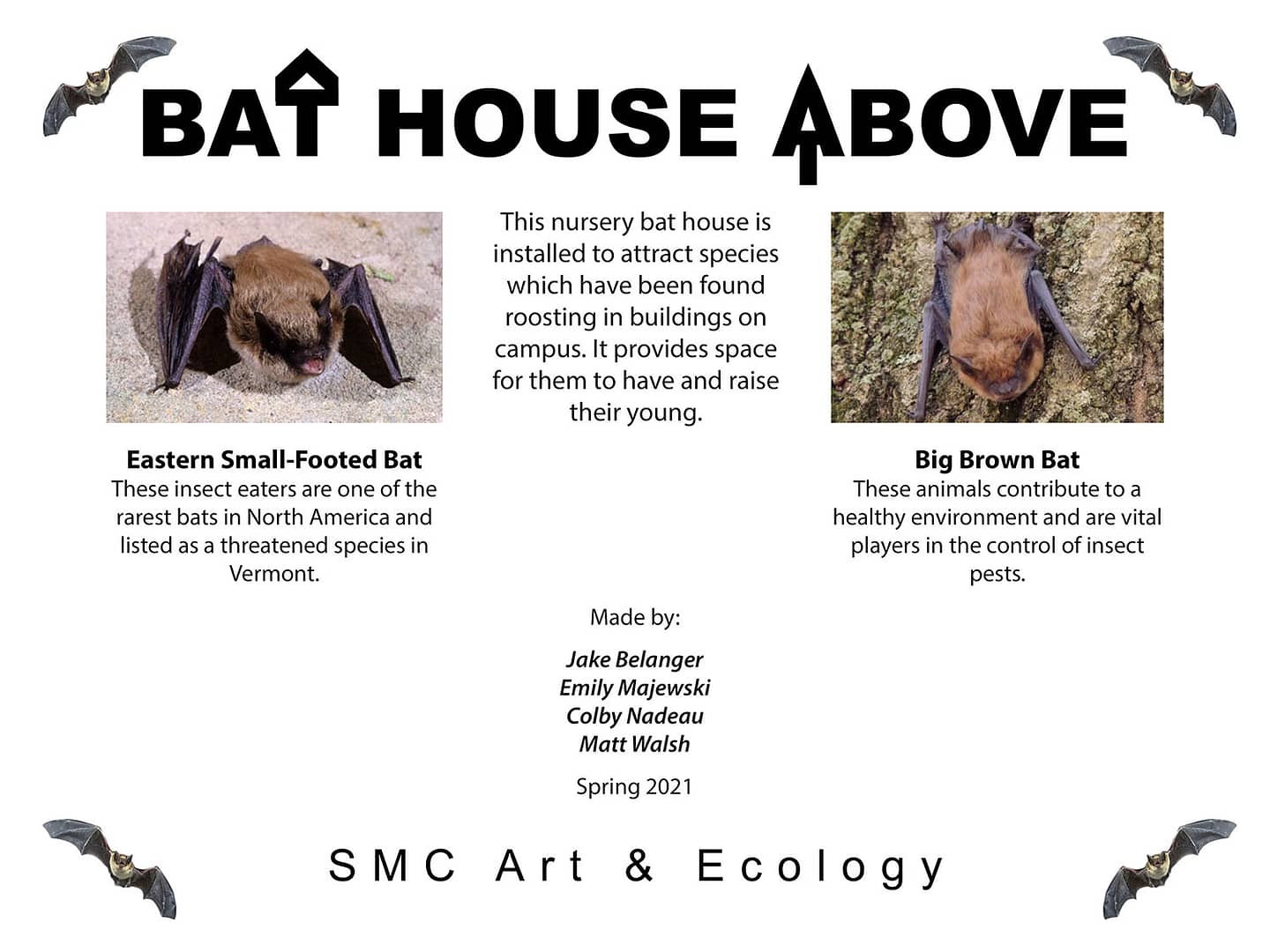
Signs like this are at reading level beneath the bat houses that have been placed around campus to inform passers-by about their presence and utility.





